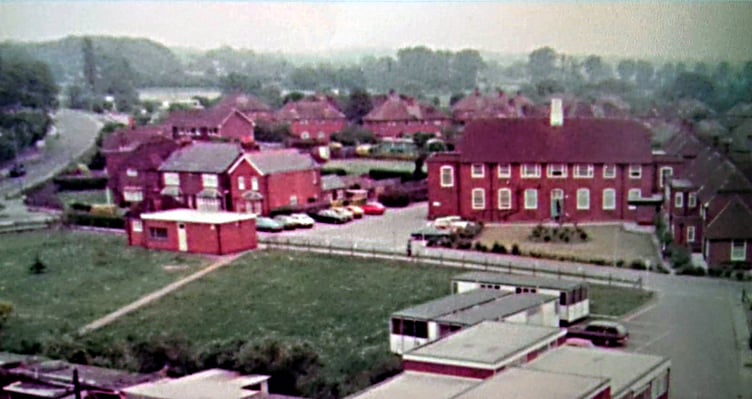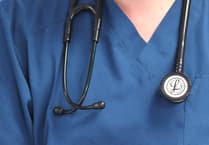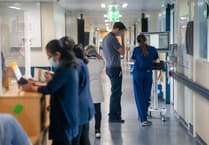With the NHS very much in the news, Peeps thought it might be a good time to look back at how hospitals operated (if you’ll excuse the pun) in the past.
Winston Burrows, who started work at Farnham Hospital as a painter’s labourer in the Engineer’s Department in 1961, has shared some rather entertaining memories with us. He took the job on temporarily but was later offered the position of decorator and ended up staying until he took early retirement 35 years later.
Over the years, his workplace covered everywhere in the area that came under the Health Service, including Farnham Hospital, all the cottage hospitals, Aldershot General, Northfield, Frimley, Farnborough, Fleet plus Frimley Park Hospital, and Aldershot and Frimley health centres.
In Farnham he worked in every ward and department, from the dining room to the mortuary, and he recalls with humour the old building, even older attitudes and the characters employed there.
As he reveals, working conditions sometimes left a lot to be desired, while snobbery and class prejudice pervaded medicine and hierarchy was very evident in hospital life:
“The pharmacy was a concrete air-raid shelter and four people worked in it, including Sam Barrow, the pharmacist. It was a small, gloomy building, as one can imagine. When it came up for painting, two of us and a labourer had to spray it for quickness at the weekend.
“We started at six o’clock one Friday evening and worked through until 4pm on Sunday. We did not have any protective equipment, just the small windows and door open. Health and safety? No such thing then!
“The main hospital kitchen had a high roof with opening windows at the top. It was not unusual to have sparrows flying about in there. After seeing a bird sit on the rim of the large food mixer and use it as a toilet, I used to say: ‘When the patient menu said Bird’s custard, that’s what you got!’ Any member of staff would walk through the kitchen for a shortcut!
“The matron would do her regular ward inspection rounds and it was just called Matron’s Round (an expression later used in one of the Carry On films.) On the ‘sacred’ day the ward sister of Tanner Ward would instruct a nurse to keep watch at an open window from where she could view the main entrance to Middle Block, where the matron would come out.
“When the matron emerged, the nurse would inform the ward sister who would in turn alert the ward. Woe betide anyone if everything was not found to be ship-shape and Bristol fashion.
“In later years a new matron took over and arrived as a breath of fresh air. She lived in a house just outside the gates of the hospital entrance.
“When she learned a nurse (who lived in the hospital accommodation) was to get married, this new matron said she could not leave for her wedding from hospital accommodation and invited her to stay at her house on the Friday and leave from there the next day to be taken to the church, which the nurse very gratefully did.
“It was the beginning of the change that was to follow in later years.
“I wonder how many people knew there was a tunnel under the road from the main building to the Crooksbury and Tanner buildings? Prior to that, patients leaving the theatre had to be wheeled on a trolley in the open air. I would be interested to know if the tunnel was filled in or just built over when the hospital was redeveloped.
“Even in 1961 the hospital was very much a hierarchical institution, and everyone knew their place – except me. The dining room, for example, was for medical staff. The tables were laid out thus: front row for doctors, next row for ward sisters, next row for staff nurses, behind them enrolled nurses and at the back – the bottom of the pile – student nurses. No-one dared to sit in the wrong section.
“The admin block was inhabited by some individuals who displayed a strong air of self-importance, accompanied by an aroma of Conservative Party rule. One day a fitter of the maintenance team arrived at work with a ‘Vote Labour’ sticker in the back of his car. He had to drive past a certain person’s office who, to his absolute horror, saw the sticker.
“It took the fitter just five minutes to reach the workshop and enter the building and in this short space of time a very strong complaint had been phoned through to the workshop boss to tell the culprit to remove the sticker from his car.
“The fitter didn’t want the sticker on display (it was his wife’s idea) but there was no way he was going to remove it now, so they had to put up with it. However, each morning after that he would drive past the “Tory’s” office VERY slowly when he arrived for work.
“At one time doctors and ancillary staff were not allowed to fraternise with nurses. When a porter took a nurse to the Regal Cinema and it got to the attention of the powers that be, both of them were given a hard dressing down.
“On another occasion a male student nurse was found to have spent the night with his girlfriend in her hospital accommodation and the balloon went up. She was threatened that her work visa could be withdrawn, resulting with her being sent back to her country of origin.
“However, it was explained that they were engaged. They married and in later years emigrated. The story hit the national newspapers.
“I was painting in a nurses’ home and an off-duty nurse came out of her room and chatted to me while I worked. The (old school) matron came in the building and saw us. She called the nurse over and said, and I quote: “It is most undignified for a nurse to be seen talking to a painter. Don’t do that again.”
“The hospital had a very large incinerator that was used to dispose of all sorts of rubbish. On occasion the police would arrive with a van load of illegal videos for disposal. They would stand and watch the porter very carefully to ensure every cassette went in.
“Starting from the main entrance there was a very large area and two greenhouses for growing vegetables to be used at the hospital. The two gardeners were Latvians, Eric and Waldemars (Wally) who took their job seriously.”
Clearly much has changed since Mr Burrows worked for the NHS, but what an evocative picture this former decorator paints of his hospital days.





Comments
This article has no comments yet. Be the first to leave a comment.